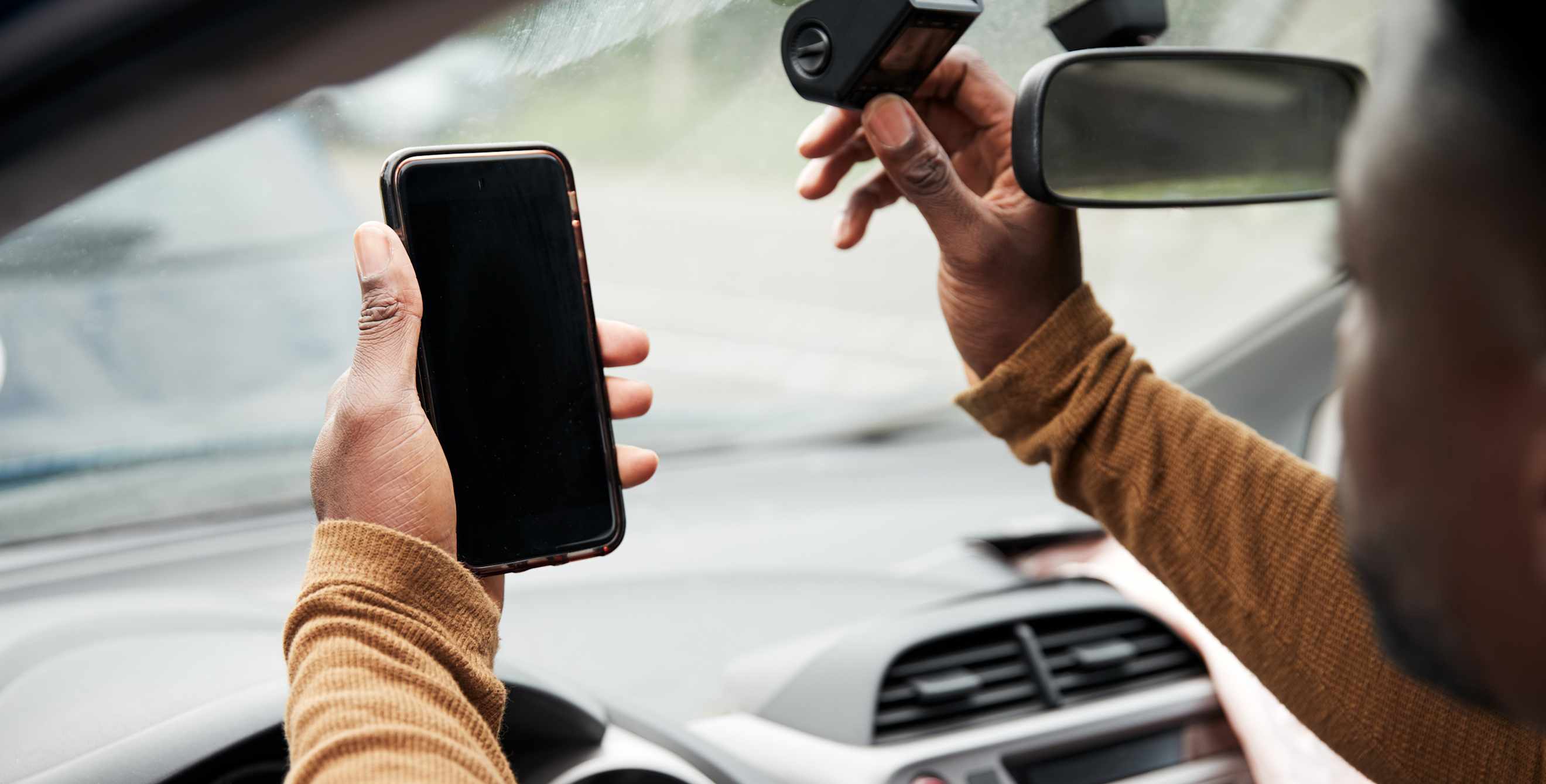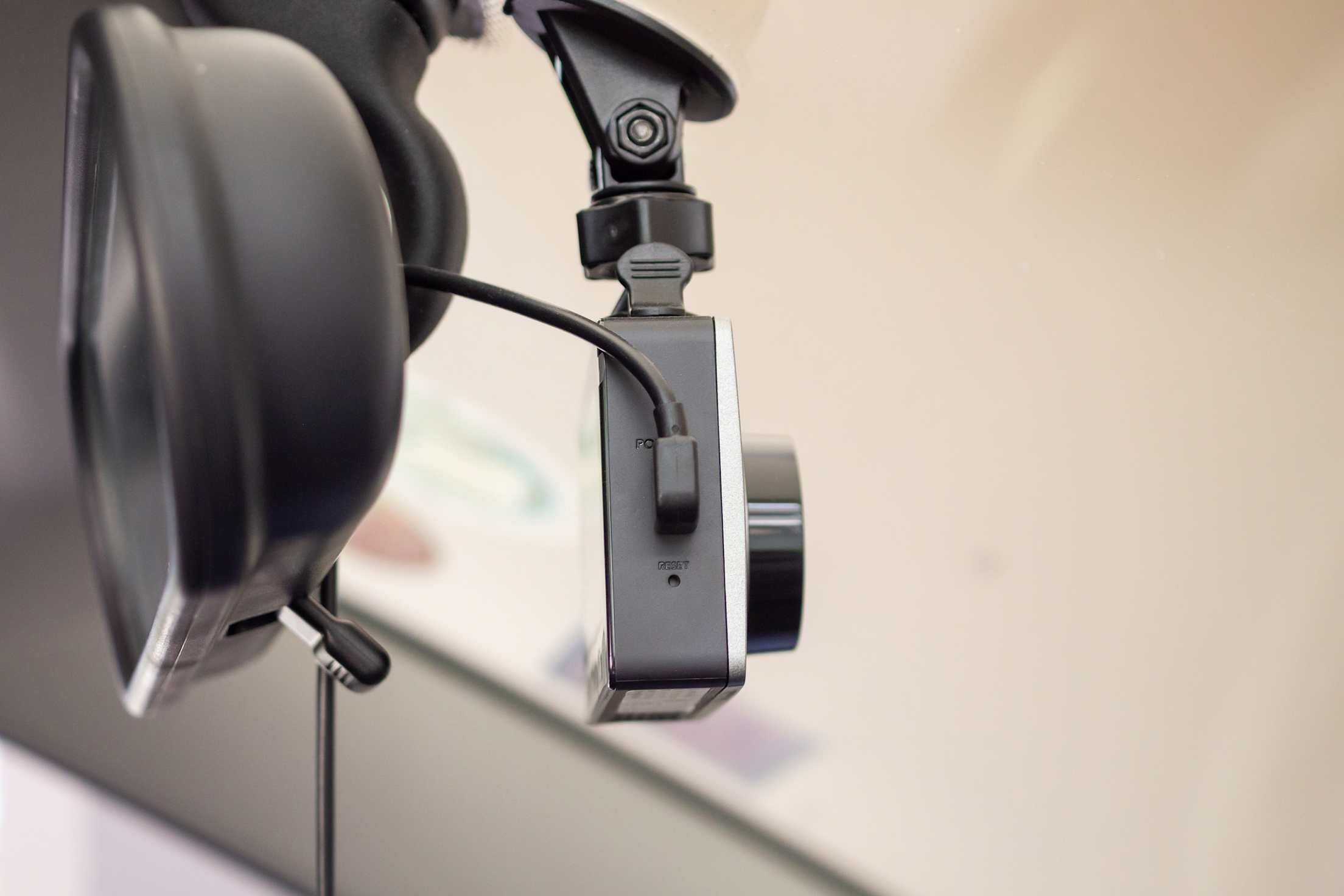
Should You Use a Dash Cam?
Plus how to choose the right one for you.

Ever wish you could have a video of the driver who recklessly swerved around you on the highway? These days it’s easy to capture one, thanks to dashboard cameras—dash cams, for short.
Dash cams are becoming more commonplace—3.7 billion of them were sold in 2022—and while they have become a popular platform for amusing and/or harrowing videos of roadway happenings, they also serve a much more practical purpose for millions of users. “They can be very helpful in an insurance setting if you've been in an accident, because the [recordings] will not tell an alternate tale of what happened,” says Bob Passmore, a vice president for the American Property Casualty Insurance Association. “That can help defend you if somebody makes a claim against you for an auto accident.”
Increasingly, insurance adjusters want to see hard evidence to determine who is at fault when a claim is initiated, and video is as incontrovertible as it gets. Without video evidence or an independent eyewitness, finding fault in a collision often remains their word against yours.
Dash cams can also be useful if you’re the victim of insurance fraud (such as a staged collision) or if you’re erroneously cited for violating a traffic law, such as failure to stop at a stop sign. Many dash cams can also be used to keep an eye on a parked vehicle, and ride-share drivers commonly use them not just to keep tabs on the road, but also on the goings-on within the vehicle. “A lot of Uber and Lyft drivers have cameras to monitor and temper any potentially negative passenger behavior,” says Passmore.

How do I select a dash cam?
There are a dizzying array of options available. Models range from very basic to fairly complex. Here’s a look at some of the most essential considerations when shopping for a dash cam:
- Budget. Let’s start with the big question: How much are you willing to spend? Very good cameras are available in the $150 to $200 range, but the most capable models can cost $400 or more. Note that some cameras offer add-on subscriptions that add extra features such as cloud-based storage of your videos; this can add another $10 to $20 per month to the cost of the camera.
- Single or dual lens. Do you want a camera that only looks ahead, or one that can also record what’s happening in the car and behind you? Dual lens systems get a more expansive view, but they’re more complex and more expensive. That said, a second lens can be invaluable if you’re using a camera to monitor the driving habits of a teenager or senior.
- Video quality. Look for a camera that supports at least 1440p (commonly known as 2K) resolution. Better 4K resolution is worth the upgrade to capture important details such as license plate numbers on vehicles speeding by.
- Mounting options. Where are you going to place the camera? On the dashboard? The windshield? The rear-view mirror? Make sure your camera supports the location that works for you and is legal in your state. For instance, in California dash cams (and GPS units) can only be mounted to the windshield in the lower left corner, lower right corner, or the center at the very top.
- Screen or screenless. Less expensive dash cams have no screen. However, many users prefer having a screen to ensure that the camera is capturing what they think it is, and to quickly and easily watch video playback without having to use a second device.
- Power options. Nearly all dash cams get power from a 12-volt socket or USB port, but if you want to record while the engine’s off, you’ll need a camera that can connect to your car’s OBD-II port (the on-board diagnostics port is usually located beneath the dashboard on the driver’s side). This will add a little complexity to installation but give you 24/7 recording capabilities.
- Bonus features. High-end cams can tag videos with GPS coordinates or provide driver assistance features like lane drift notifications.
What issues do I need to watch out for with a dash cam?
Don’t expect that your auto insurance agent will give you a rate cut if you install a dash cam, says Passmore. “The benefits of a dash cam are primarily after an accident, not before,” he says. And dash cam footage can work against you if you’re on the wrong side of a roadway incident. An expensive dash cam left in the car can also be an attractive target for a thief, which may defeat the purpose of having one in the first place.
Dash cams can block part of the view through your windshield, which has raised regulatory issues. While dash cams are legal in every state, many have very specific laws about where and how they can be mounted. And if your dash cam records audio inside the vehicle, it can also run afoul of consent laws in California, Oregon, Washington, and other states.
Finally, many users tend to fiddle with dash cams when they should be driving. This can be a particular problem for drivers prone to distraction. “We have a significant problem with distracted driving,” says Passmore, “so users should get a camera set up before they start moving the car—just like they’re adjusting their mirrors.”
But the way things are headed, drivers may not have to worry about any of these concerns for much longer. Manufacturers including BMW, Tesla, Toyota, and others now offer cars with dash cams built in, and more are surely to come.
Make smart choices, whether you’re buying, selling, insuring, maintaining, or repairing a vehicle.